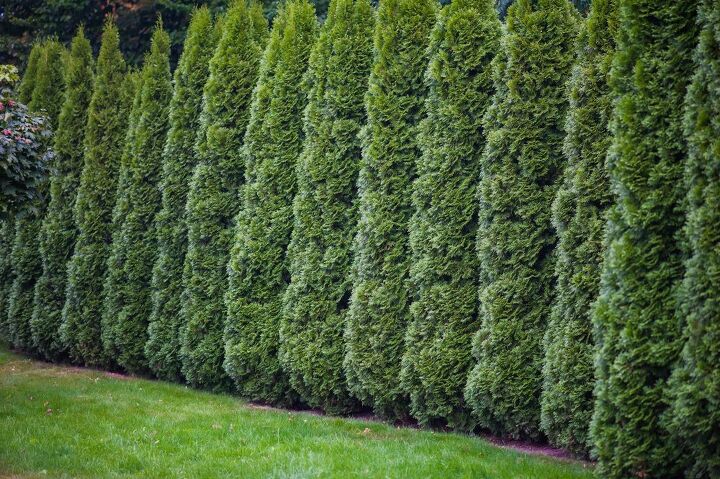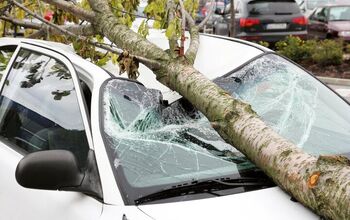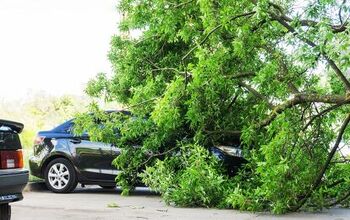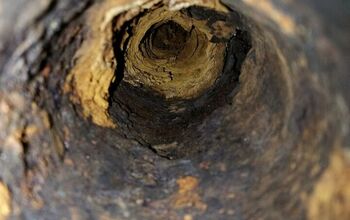Are Arborvitae Trees Deer Resistant? (Find Out Now!)

Keeping your yard beautifully landscaped is the perfect way to not only make your home look beautiful but also to give you some much-needed privacy. Adding just the right bushes, trees, and plants can make a home unique and be an appealing target for animals like deer to grab a quick meal. If you live in an area with a high deer population, you will want to search for deer-resistant plants to keep your landscaping and yard looking fantastic, even with deer roaming the area.
Usually, arborvitaes are a deer-resistant plant option that deer do not like to eat because the needles give off a bitter taste. However, deer can eat this plant when food is scarce, and options are limited. Using a deer repellent spray or a physical barrier like a net or mesh section can help deter deer from eating your arborvitae.
Keep in mind that not every type of arborvitae will be deer resistant, and many species of this evergreen plant might actually attract deer to your property. Before selecting an arborvitae variety for your home, be sure to check the name of the specific species to ensure it has deer-resistant properties. An associate at your local nursery should be able to point out the deer-resistant varieties of arborvitae to allow you to have a beautiful yard and home.
Do You Need Landscaping Services?
Get free, zero-commitment quotes from pro contractors near you.

What Types of Arborvitae Are Deer Resistant?
There are several types of different arborvitae species available, all of which belong to the evergreen family. This characteristic means that these plants will stay green all year long and do not have traditional leaves that drop through winter and fall. Instead of flowers or berries, arborvitae will get small pinecones. Although there are many different arborvitae species, not all of these plants will be deer resistant. To find deer resistant plants, search for the following species:
- “Can-Can” western red cedar. This type of arborvitae is a dwarf plant, which is smaller in size. Not only is it a deer-resistant plant, but it is also a pest-free arborvitae choice which makes it excellent in the garden.
- “Spring Grove” western red cedar
- “Steeplechase” arborvitae
- “Zebrina” western red cedar
- Thuja “Giant Green” arborvitae. The Giant Green arborvitae is one of the more popular options readily available from garden centers and nurseries.
Many of these arborvitae plants are specialty species that can be difficult to locate. Be sure to speak with a specialist at the nursery when selecting your arborvitae to ensure you find a deer-resistant option for your garden.
Are Arborvitaes Easy To Care For?
The arborvitae is an all-around great tree with some remarkable properties that make it a popular choice for homeowners. Not only is it largely deer resistant, but it is also very easy to care for and does well in several climates and soil conditions. To best care for your arborvitae, you will want to maintain the following conditions:
- This plant likes an area with well-drained soil that is rich and deep.
- Try to keep the soil slightly acidic soil levels that are between a pH of 6.0 and 8.0.
- These plants like full sunlight, but they have also been known to grow in partial shade areas.
- Arborvitaes love areas with high humidity. Keep in mind that high humidity does not always have to translate to areas with high heat.
Luckily, some varieties of arborvitae are also pest resistant, which makes them very durable and hardy. The “Can-Can” variety of arborvitae is particularly hardy and makes an excellent choice for homeowners that may not necessarily have a green thumb.
What Can I Do If a Deer Ate My Arborvitae?
Unfortunately, even though an arborvitae plant is generally deer-proof, deer will turn to their green branches when food is scarce, or there are limited other food options. Many homeowners will find deer eating arborvitae in the colder winter months when other food options may not be available for deer. Sadly, these plants are not great at creating new growth, especially when the green needles on this plant have been chewed off.
To restore your arborvitae even after a deer has nibbled the plant, it is best to hope there is enough wood left on the plant for the bush to regenerate leaves and fill back in naturally. Be sure to protect your plant with netting or mesh while it is recovering, so the little bit of plant has a chance to fill back in. Although regrowth is possible with enough remaining healthy wood, be aware that it can be extremely slow-growing and may take a while to fill back in.
What Other Plants are Deer Resistant?
Finding deer-resistant plants is the best way to keep your landscaping looking good, even with deer roaming your property. Although no plant will be completely deer resistant, it is best to find plants that are bitter in flavor, have a strong scent, or are thorny with an undesirable texture. The natural properties of these plants will normally deter deer.
Some of the best plants to turn to that are deer resistant are Buxus or boxwood plants. Both of these are incredibly thorny and bitter-tasting. Other great plants to add to your garden to deter deer are marigolds and the perennial called lamb’s ears. These plants are beautiful to look at but will also be very unappealing for deer. Marigolds can even deter other pests and insects away from your garden, making them an all-around wonderful option.
How Can I Deter Deer From Eating My Plants?
Even if you purchase deer-resistant plants, sometimes when food is scarce, deer will still nibble at your plants. To prevent this, try to use a deer repellent. A deer repellent is a spray that can be applied to the plant leaves and branches. This spray is an excellent way to control deer feeding on your plants.
Another alternative is to use burlap, mesh, or netting to cover the plant. Using a physical barrier can help prevent deer from reaching the plant while still providing enough air, light, and water to allow the plant to thrive.
Do You Need Landscaping Services?
Get free, zero-commitment quotes from pro contractors near you.

Related Questions
How Big Do Arborvitae Get?
Many people choose arborvitae because it is a beautiful and relatively hardy plant. Deer generally do not go toward arborvitae, and they can make a wonderful privacy plant to act as a physical barrier between you and a neighbor.Be aware, though, that this is a huge tree that can be both tall and wide. The American arborvitae, at its peak, will grow to nearly 40 or 60 feet tall and can be between 10 and 15 feet around once it reaches maturity. Of course, this tree can be trimmed to fit your space or can be left tall.
Where Can Arborvitae Grow?
The arborvitae is a great all-around plant that many homeowners across the country choose to decorate their homes with and provide ongoing privacy. Their deer-resistant nature makes them durable landscape features, even in areas where there may be a thriving deer population.According to USDA plant hardiness maps and regions, the arborvitae can happily live in areas that are between zones 3 and 11. The arborvitae is technically a member of the cypress family, and there are more varieties of this plant live in cooler zones compared to warmer zones.

We are a team of passionate homeowners, home improvement pros, and DIY enthusiasts who enjoy sharing home improvement, housekeeping, decorating, and more with other homeowners! Whether you're looking for a step-by-step guide on fixing an appliance or the cost of installing a fence, we've here to help.
More by Upgraded Home Team



























